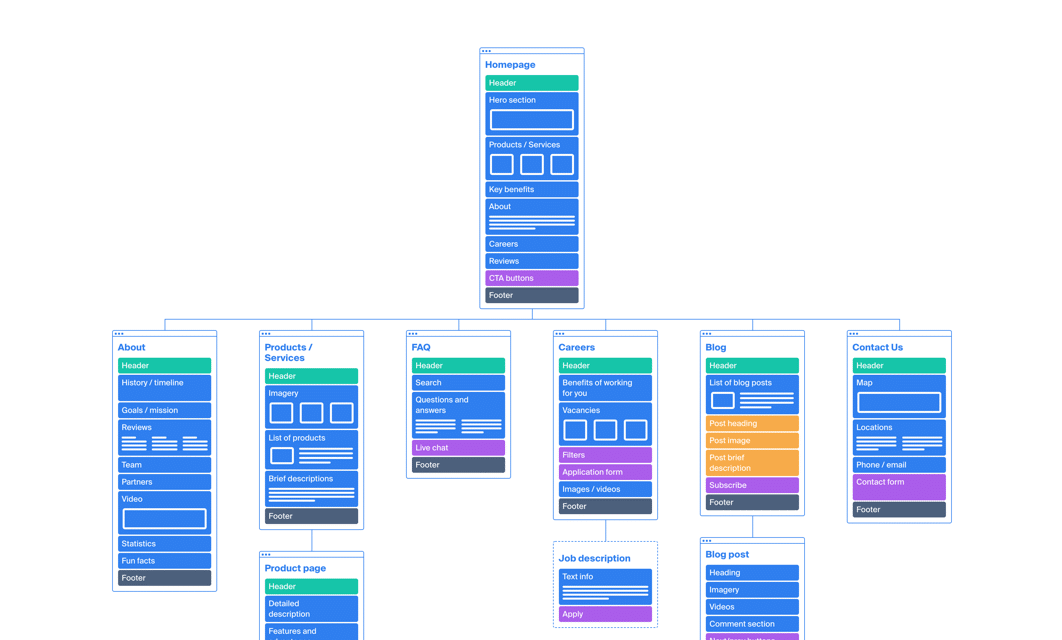Indexing issues tend to be one of the biggest barriers to increasing one’s page rankings on search engines. This can be detrimental for SEO as the more indexing issues there are, the harder it is for users to find a website as it will be lost on Google. Indexing issues are so prevalent, yet fixing them can be a mystery to most. No need to fear though because sitemaps can be an SEO expert’s secret weapon to minimising indexing issues. In simple terms, sitemaps are a navigation tool enabling search engines and users to understand what information is on the website, allowing crawling and indexing to take place.
Types of sitemaps
There are two types of sitemaps, one should consider implementing: XML and HTML sitemaps. XML sitemaps are generated to help search engines like Google crawl and navigate pages. They are able to be hidden from the public as they are presented likewise to a table of contents designed to help search engines easily index their pages. The benefits of XML sitemaps include its ability to list all URLs on one’s website (including those pages search engines might have missed otherwise for various reasons). Through listing out all URLs, XML sitemaps facilitate speedy content discovery, speeding up the indexing process.
Moving on, HTML sitemaps cater more towards users. The public is able to find new sub-pages and content within a few simple clicks. By speeding up the site navigation process for users, it will decrease the bounce rate. HTML sitemaps are especially useful in organising content for larger websites. This will improve page rankings on search engines as more users will be interacting with the website. As a result, search engines promote it to even more potential users. Whilst sitemaps can be time-consuming to create, using both HTML and XML sitemaps in conjunction with one another can greatly minimise indexing issues.
Creating a sitemap
As stated, sitemaps can be tedious to create, they are relatively simple for one to generate. The first step is to review all the pages on the website. This includes all the pages stemming off the homepage as well as all other sub-pages. These can all be organised into a simple flowchart whereby the homepage and higher-level pages are at the top and sub-pages go underneath.
All URLs need to be coded and validated into HTML and/or XML. When all that is done, the codes need to be put into the root folder of the website. Then it will be ready to be submitted as a sitemap to different search engines. Thus, sitemaps are relatively easy to create. Nonetheless, one must employ sitemap best practices to help them pass Google’s requirements.
Successful sitemaps
In order for Google to successfully crawl the website’s pages, all indexes need to be fully qualified. There may be simple issues such as robot.txt or blocked URLs being used that would prevent Google or other search engines from crawling. One can simply check whether there are issues with their indexes via the Google URL Inspection Tool to troubleshoot any issues that may be preventing a sitemap from being approved.
Moreover, whilst not all pages on a website need to be submitted in a sitemap, it is highly encouraged to include all URLs. The more URLs covered, the easier it becomes for Google to crawl and index all pages on the website. Also, by not including all URLs, it decreases the chances of those pages being ranked. Similarly, as content is constantly evolving, the sitemap must evolve with it. The sitemap needs to be updated on a regular basis or else it will become obsolete with broken links and blocked URLs. Therefore, by taking the time and effort to create a sitemap and reviewing it regularly, it is more likely to be successful in improving indexing.
Implications
Unfortunately, sitemaps will not magically fix all indexing issues. Sitemaps are useful in helping search engines know your pages exist. However, it does not automatically mean it will be ranked for users to see. To remove all indexing issues, multiple changes need to be made, not just adding sitemaps. These changes may include improving content, generating backlinks, improving speed and more.
With that said, sitemaps are still a very useful tool in improving indexing through their abilities to create a table of contents for both search engines and users, allowing them to navigate the site with ease. Sitemaps address many indexing issues, including broken links, bounce rates, navigation issues, missing URLs and more. For more information, go to SEO Sydney – the experts in all things SEO today!




